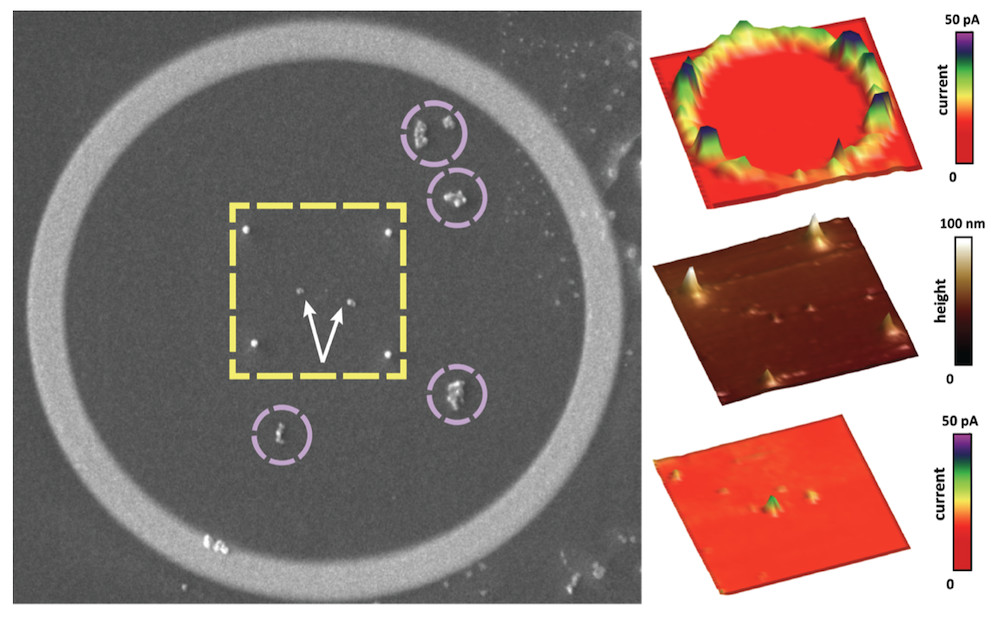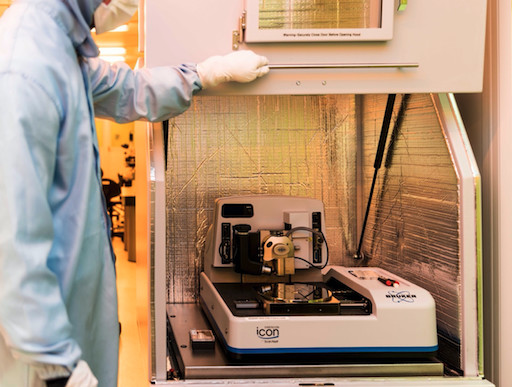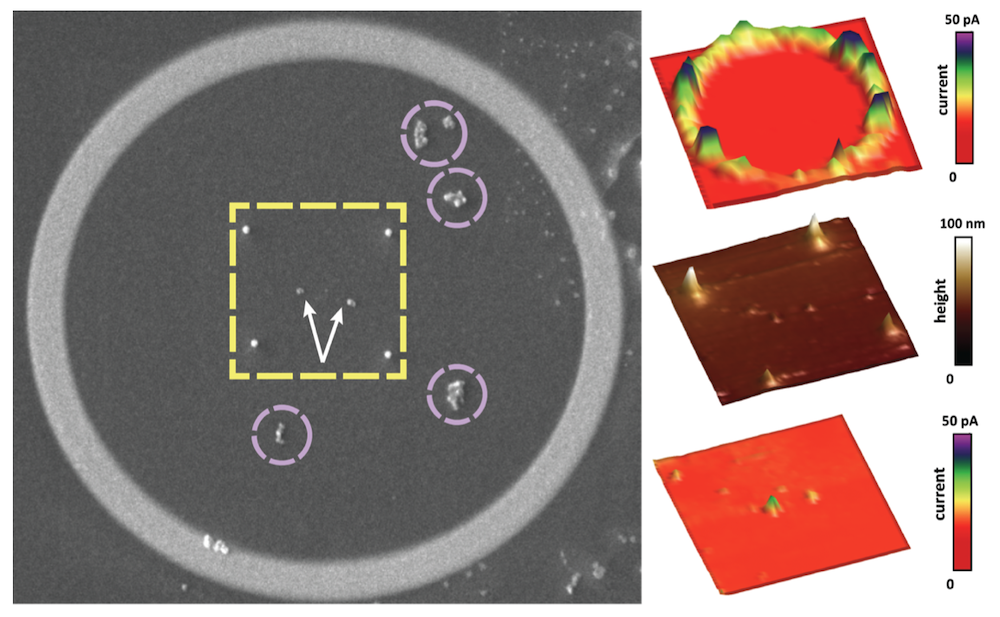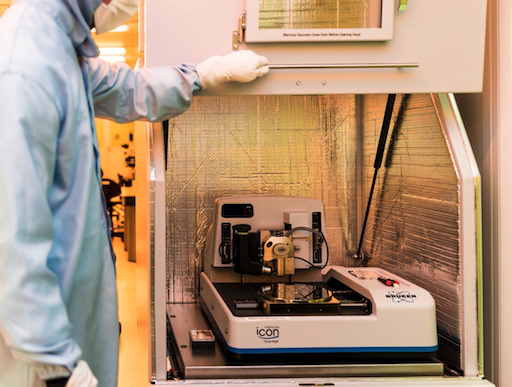Archer Materials Limited (“Archer”, the “Company”, “ASX: AXE”) is pleased to announce the Company has reached a significant technological milestone in progressing its 12CQ technology that aims to build a room-temperature quantum computing qubit processor (“chip”). Archer is one of very few companies globally that provides investors a direct, on-market opportunity to invest in quantum computing technology.
Commenting on the Company’s 12CQ development, Archer CEO Dr Mohammad Choucair said: “We have successfully performed our first measurement on a single qubit component, which is the most important component, marking a significant period moving forward in the development of Archer’s 12CQ quantum computing chip technology.
“Building and operating the 12CQ chip requires measurements to be successfully performed at the very limits of what can be achieved technologically in the world today. Directly proving room-temperature conductivity of the 12CQ chip qubit component solidifies our global competitive advantage and advances our development towards a working chip prototype”.
Room-temperature conductivity measurement on single qubit components
Conductivity measurements (“measurements”) on single qubit components (“qubits”) were carried out by Archer staff using conductive atomic force microscopy that was configured using
Measurement device and proof of room-temperature conductivity of single qubits
The measurements directly and unambiguously proved, with nanometre-scale precision, the conductivity of single qubits at room-temperature in ambient environmental conditions (e.g. in the presence of air, moisture, and at normal atmospheric pressures) (Fig. 1).
Fig. 1. Direct proof of single qubit conductivity. Left: Electron microscope image of the pre- patterned testbed device that was purpose-built for the measurements. Description: Two single isolated qubit components (indicated by the arrows) are located in the centre of the device, with several other clusters of qubits present (indicated within the purple dashed circles). The qubits were placed on a low-conductivity polymer which is on-top of a metal layer, which are all on a silicon wafer. Four insulating (i.e. non-conducting) silicon dioxide particles were grown to roughly the same size as the qubits (50-100 nanometres, where 1 nanometre is a billionth of a metre), in a square array pattern (bright spots inside the corners of the yellow dashed square) around the single qubits. A (conducting) platinum ring electrode was grown to roughly the same thickness as the qubits to act as an internal reference material and has a diameter of 10 micrometres, about one tenth of the thickness of a human hair. Dashed line shapes and arrows are overlaid on the raw image for visual guidance.
Right, from Top to Bottom: Top image shows the electrical current (1 pA is a millionth of a millionth of an amp) simultaneously recorded with the topography of the platinum ring with the profile showing excellent conductivity; centre image is a conduction atomic force microscopy (c-AFM) topography of the region inside the dashed yellow square in the microscopy image on the Left, showing the height profile of the four silicon dioxide particles and the qubits; and the bottom right image shows that while both the qubits and the insulating silicon particles are clearly visible in the topographic height profile, only the qubits give a clear electrical signal corresponding to a conducting material. All measurements were performed at room-temperature and under ambient conditions.
Commenting on the Company’s 12CQ development, Archer CEO Dr Mohammad Choucair said: “We have successfully performed our first measurement on a single qubit component, which is the most important component, marking a significant period moving forward in the development of Archer’s 12CQ quantum computing chip technology.
“Building and operating the 12CQ chip requires measurements to be successfully performed at the very limits of what can be achieved technologically in the world today. Directly proving room-temperature conductivity of the 12CQ chip qubit component solidifies our global competitive advantage and advances our development towards a working chip prototype”.
Room-temperature conductivity measurement on single qubit components
Conductivity measurements (“measurements”) on single qubit components (“qubits”) were carried out by Archer staff using conductive atomic force microscopy that was configured using
Measurement device and proof of room-temperature conductivity of single qubits
The measurements directly and unambiguously proved, with nanometre-scale precision, the conductivity of single qubits at room-temperature in ambient environmental conditions (e.g. in the presence of air, moisture, and at normal atmospheric pressures) (Fig. 1).
Fig. 1. Direct proof of single qubit conductivity. Left: Electron microscope image of the pre- patterned testbed device that was purpose-built for the measurements. Description: Two single isolated qubit components (indicated by the arrows) are located in the centre of the device, with several other clusters of qubits present (indicated within the purple dashed circles). The qubits were placed on a low-conductivity polymer which is on-top of a metal layer, which are all on a silicon wafer. Four insulating (i.e. non-conducting) silicon dioxide particles were grown to roughly the same size as the qubits (50-100 nanometres, where 1 nanometre is a billionth of a metre), in a square array pattern (bright spots inside the corners of the yellow dashed square) around the single qubits. A (conducting) platinum ring electrode was grown to roughly the same thickness as the qubits to act as an internal reference material and has a diameter of 10 micrometres, about one tenth of the thickness of a human hair. Dashed line shapes and arrows are overlaid on the raw image for visual guidance.
Right, from Top to Bottom: Top image shows the electrical current (1 pA is a millionth of a millionth of an amp) simultaneously recorded with the topography of the platinum ring with the profile showing excellent conductivity; centre image is a conduction atomic force microscopy (c-AFM) topography of the region inside the dashed yellow square in the microscopy image on the Left, showing the height profile of the four silicon dioxide particles and the qubits; and the bottom right image shows that while both the qubits and the insulating silicon particles are clearly visible in the topographic height profile, only the qubits give a clear electrical signal corresponding to a conducting material. All measurements were performed at room-temperature and under ambient conditions.

Fig. 1

Archer staff operating the specialised, state-of-art conduction atomic force microscopy instrumentation required to perform the measurements. The instrumentation is housed in a chip prototype foundry with a cleanroom environment and sterile protocols. Wider commercial and technological impact of the measurements
The qubit conductivity and the associated underlying theories were proposed in 2016 by Archer
CEO Dr Mohammad Choucair, in the seminal work underpinning the 12CQ technology published in the highly reputable peer-reviewed scientific journal Nature Communications . The measurements have now directly, unambiguously and reproducibly confirmed these proposals, that are major factors in determining the commercial viability of the 12CQ chip technology.
The measurements progress Archer’s technological development towards controlling quantum information residing on individual qubits (“control”) – which is a key componentry requirement for a working quantum computing qubit processor; another being readout. Control must be performed prior to readout, as these subsequent steps represent a logical series in the 12CQ quantum computing chip function.
Commenting on the significance of the milestone, Archer CEO Dr Mohammad Choucair said:
“The technological significance of the work is inherently tied to the commercial viability of the 12CQ technology. The room-temperature conductivity potentially enables direct access to the quantum information stored in the qubits by means of electrical current signals on-board portable devices, which require conducting materials to operate, for both control and readout”.
“The [intrinsic materials feature of] conductivity in our qubit material down to the single qubit level represents a significant commercial advantage over competing qubit proposals that rely on insulating materials, such as diamond-based materials or photonic qubit architectures, that are difficult to integrate onboard portable devices”.
Archer’s 12CQ chip technology and related intellectual property
12CQ is a world-first technology that Archer aims to build for quantum computing operation at room-temperature and integration onboard modern electronic devices. For more information about Archer’s quantum computing technology, please view the Company’s most recent technical presentation.
Archer maintains an exclusive licence to all the intellectual property rights related to the 12CQ chip technology, including the trade secrets resulting from the measurements, and patent applications filed under the Patent Cooperation Treaty (“PCT”) to protect and commercialise intellectual property in Australia, China, Japan, South Korea, Hong Kong, European Union, and the United States. The international PCT application continues to progress in all jurisdictions at various stages of the patent granting procedure.
12CQ® is a registered trademark of Archer Materials Limited.
Next steps in the 12CQ commercial development roadmap
The 12CQ chip is a disruptive quantum computing technology, and in the current stage of development, maintains a competitive advantage that is extremely difficult to erode. Archer intends to develop the 12CQ chip to be directly sold and intellectual property rights to the chip technology licensed.
The Company’s technology development is a world-first and is currently focused on achieving quantum control of a single qubit, that is essential for quantum information processing. Archer is currently performing quantum measurements and materials characterisation at different laboratory facilities to achieve quantum control, and key measurements will be released to ASX.
Further reading with much deeper technical details on what is generally and fundamentally involved in progressing towards performing quantum measurements on a single qubit is available online.
CEO Dr Mohammad Choucair, in the seminal work underpinning the 12CQ technology published in the highly reputable peer-reviewed scientific journal Nature Communications . The measurements have now directly, unambiguously and reproducibly confirmed these proposals, that are major factors in determining the commercial viability of the 12CQ chip technology.
The measurements progress Archer’s technological development towards controlling quantum information residing on individual qubits (“control”) – which is a key componentry requirement for a working quantum computing qubit processor; another being readout. Control must be performed prior to readout, as these subsequent steps represent a logical series in the 12CQ quantum computing chip function.
Commenting on the significance of the milestone, Archer CEO Dr Mohammad Choucair said:
“The technological significance of the work is inherently tied to the commercial viability of the 12CQ technology. The room-temperature conductivity potentially enables direct access to the quantum information stored in the qubits by means of electrical current signals on-board portable devices, which require conducting materials to operate, for both control and readout”.
“The [intrinsic materials feature of] conductivity in our qubit material down to the single qubit level represents a significant commercial advantage over competing qubit proposals that rely on insulating materials, such as diamond-based materials or photonic qubit architectures, that are difficult to integrate onboard portable devices”.
Archer’s 12CQ chip technology and related intellectual property
12CQ is a world-first technology that Archer aims to build for quantum computing operation at room-temperature and integration onboard modern electronic devices. For more information about Archer’s quantum computing technology, please view the Company’s most recent technical presentation.
Archer maintains an exclusive licence to all the intellectual property rights related to the 12CQ chip technology, including the trade secrets resulting from the measurements, and patent applications filed under the Patent Cooperation Treaty (“PCT”) to protect and commercialise intellectual property in Australia, China, Japan, South Korea, Hong Kong, European Union, and the United States. The international PCT application continues to progress in all jurisdictions at various stages of the patent granting procedure.
12CQ® is a registered trademark of Archer Materials Limited.
Next steps in the 12CQ commercial development roadmap
The 12CQ chip is a disruptive quantum computing technology, and in the current stage of development, maintains a competitive advantage that is extremely difficult to erode. Archer intends to develop the 12CQ chip to be directly sold and intellectual property rights to the chip technology licensed.
The Company’s technology development is a world-first and is currently focused on achieving quantum control of a single qubit, that is essential for quantum information processing. Archer is currently performing quantum measurements and materials characterisation at different laboratory facilities to achieve quantum control, and key measurements will be released to ASX.
Further reading with much deeper technical details on what is generally and fundamentally involved in progressing towards performing quantum measurements on a single qubit is available online.





 IonQ Achieves Industry Leading Performance on Next Generation Barium Qubits
IonQ Achieves Industry Leading Performance on Next Generation Barium Qubits